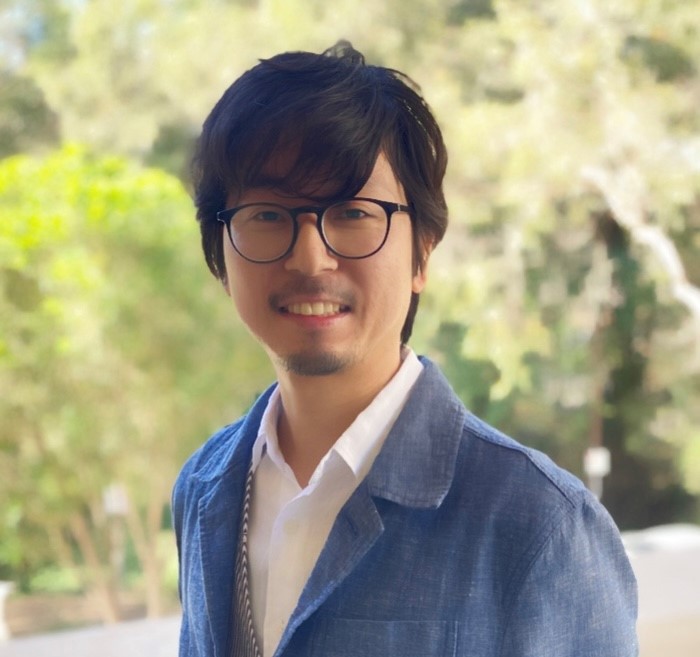In 'Back to the Future', Marty McFly, in an effort to ensure his future existence, takes to the stage and wows the 1950s crowd with his rendition of Chuck Berry’s soon to be hit, Johnny B. Goode. The kids from 1955 lap it up.
But then Marty goes a step further. He pulls away from Johnny B. Goode and allows the chords to grow heavier, chunkier. We’re time travelling forward to 80s rock, with squealing guitar solos and amp kicks. At the peak of the performance he stops and looks out at the crowd. They stand there, still, confused – he’s lost them. These musical motifs are too far in the future for them to get their heads (and ears) around.
“I guess you guys aren’t ready for that yet. But your kids are gonna love it,” Marty tells them.
It’s a classic cinema moment that riffs on the musical tensions that exists between generations. It works because the discussion of what constitutes ‘good’ music is always in contention. While this discussion can often take the form of an intergenerational fight, it’s also a conversation and a negotiation, a meeting between different generations and what they value.
This idea of intergenerational conversation underpins much of this piece. It’s a concept that has applications to how we manage our corporations, and how we shape our societies as we move toward a sustainable future.
Sustainable development is commonly defined as development that ‘meets the needs of the present without compromising the ability of future generations to meet their own needs.”[i] This definition puts the present and future generations as key subjects. Unfortunately, the Brundtland report (which coined this definition) frames future generations as those not yet born and it’s difficult to account for those who have no say politically or economically in the eternal present. There has been some debate in the academic literature about how to move past the challenge of accounting for those not yet born. For example, Edith Brown Weiss wrote in 1990 about Fairness to Future Generations and creating a Future Generations Ombudsman.[ii] While more recently experimental research has found future generations representatives can increase investments in intergenerational justice.[iii] However, what is common is that this research assumes, like the Brundtland report, that future generations are those not yet born.
However, if a simpler perspective is taken, the philosophical knots of accounting for those not yet born can be avoided and a more practical perspective taken. To do this, one can ask; how long is a generation?
The answer to this question appears to be approximately 30 years[iv]. A time span reinforced by a 1960s article that argued ‘most students of the problem of generations agree that a generation lasts about thirty years.’[v] As such, if a generation is about 30 years, then a practical turn occurs. Suddenly, future generations are everywhere. We are living with them, we can account for them, and they have political and economic power. They are those of us who are 30 years younger and those of us likely to be alive in 30 years’ time. Thus, sustainable development moves from dealing in a temporal abstraction, to one where future generations are living and breathing, and we can have a conversation with them.
The definition of sustainable development can now be changed to something like –
Sustainable development meets the needs of the present while also ensuring that decisions taken today by corporate leaders have been formulated after consultation and input on the likely future needs and future debts that those who are 30 years younger than those corporate leaders, will comfortably incur because of the decisions taken today.
This revamped definition is a mouthful, yet the shift is clear, sustainable development becomes practical and actionable.
So, let’s put this into practice. Currently, our aim is to achieve net-zero emissions by 2050, in 28 years, a time span akin to a generation. At this time, the Climate Action 100+ initiative outlines that just 166 companies are responsible for up to 80% of corporate industrial greenhouse gas emissions.[vi] Decisions made by those 166 CEOs are critical to achieving net-zero by 2050. Reviewing the 166 corporations and their commitments to achieving net-zero by 2050 relative to the age of the CEOs reveals some interesting results.[vii] The average age of a CEO is 59 years old[viii] and based on OECD data, these individuals are about two-thirds of the way through their life[ix]. If we assume that the average age of the CEOs does not shift by 2050, then in that year, the CEOs of 2050 are individuals alive today and 29 years old on average. Hence, every single one of the CEOs of the Climate Action 100+ corporations could talk to the future generation of leaders right now.
Despite this, just 42% of these corporations have a policy to reduce greenhouse gas emissions to net-zero by 2050 and when cross-referencing this to CEO age, it is found that age matters. In short, the older the CEO the less likely that corporation will have a net-zero policy. Further, the more likely that a CEO is to be dead by 2050 (based on OECD life expectancy data), the less likely it is to have a net-zero policy.[x] These results are perhaps not too surprising in that those with less time to live are perhaps less likely to care about a future they have no stake in. However, corporations are the tools we use to shape our society, thus it would appear as a society we are taking a loose approach to our future, if CEO age is a key correlate to important generational decisions such as net-zero.
Can we do better?
Yes, doing better could start with the formation of future generation boards. These corporate governance vehicles would be mandated to advise on future generations’ needs and would be constituted by those 30 years younger than the leaders of the corporation. This is the key suggestion of this piece; that to create a sustainable society we may need to develop future generations boards, and make them part of standard corporate governance mechanisms.
With such a mechanism in place a conversation between generations is possible now. The accounting for the future will not be an abstract thought experiment, but one negotiated with those that will be around to foot the bill. If all this sounds impossibly complex just think back to Marty McFly’s predicament. To ensure his own survival in the distant future he has to negotiate with everyone in the present of 1955. When the music stops playing Marty pleads with the band;
Wait, you don’t understand. If you don’t play, there’s no music. If there’s no music they don’t dance. If they don’t dance they don’t kiss and fall in love and I’m history.
His predicament is now our predicament. Like Marty, we need the music and conversation to flow. Starting a conversation between generations in a corporation may not be easy, but the future depends on us having it.
And our kids are gonna love it.
.
*****
REFERENCES
[i] Brundtland Commission (1987), “World commission on environment and development”, Our common future.
[ii] Edith Brown Weiss (1990) In Fairness to Future Generations, Environment: Science and Policy for Sustainable Development, 32:3, 6-31, DOI: 10.1080/00139157.1990.9929015
[iii] Bogacki, J. and Letmathe, P., 2021. Representatives of future generations as promoters of sustainability in corporate decision processes. Business Strategy and the Environment, 30(1), pp.237-251. And Nakagawa, Y. and Saijo, T., 2020. Can individuals caring little about future generations serve as their representatives?. Futures, 124, p.102626.
[iv] https://en.wikipedia.org/wiki/Generation
[v] Berger, B.M., 1960. How long is a generation? The British Journal of Sociology, 11(1), pp.10-23.
[vi] https://www.climateaction100.org/
[vii] Data on the age of the CEO was gathered from Refinitiv Workspace database in June 2022. Data was available for 150 companies.
[viii] The lowest age of a CEO is 47 years, and the high is 91 years (Mr. Warren Buffet of Berkshire Hathaway).
[ix] https://data.oecd.org/healthstat/life-expectancy-at-65.htm. For life expectancy the highest for women was 89.6 years and for men 85.2 years. For the analysis these highest ages were used.
[x] To explain in more detail and in three parts. First, the average age of a CEO of a corporation that does not have a zero emissions policy is 1.9 years older than the age of a CEO of a company that does have a policy.[x] The older CEO being 59.9 years and the younger being 58 years old, a small difference (1.9 years) but a statistically significant difference, nonetheless. Second, the average age of CEOs of European companies with a policy for net-zero emissions by 2050 is lower than CEOs from the rest of the world by 2.1 years. A European CEO being 57 and rest of world 59.1 years.[x] Again, a small but statistically significant difference that reveals that from a net-zero by 2050 perspective it pays to be a little younger and have a headquarters in Europe. Third, when considering life expectancy and whether on average one of the Climate Action 100+ CEOs will be dead by 2050[x] it is found that all else being equal, being alive in 2050 matters. If a CEO is likely to be alive in 2050, then there is a 67% (two-thirds) chance their corporation will have a net-zero emissions by 2050 policy. Whereas if the CEO is likely to be dead by 2050 there is a 45% (less than half) chance that their corporation will have a net-zero by 2050 policy.

Professor Nick Barter
Nick's purpose is to help business become Future Normal (www.futurenormal.net) - enabling them to act meaningfully in our surroundings and purposefully to benefit society. A Future Normal business is one where the CEO and their teams are enabled to meet the challenges of the coming decades and that which is top of mind; optimizing enterprise value in the context of net-zero,DEI and sustainability. To achieve this, he researches with and advises business domestically and internationally and teaches into Griffith University's world-leading MBA.
Prior to academia, he worked for Ernst and Young and Virgin Media in a variety of roles from strategy consultant through to Head of Business, Head of Strategy and Head of Marketing.

Dr Akihiro Omura
Dr Akihiro Omura is a Lecturer in Finance. His research interest lay in Responsible Investing, Climate Finance, Commodity Economics and Finance, Asset Pricing and Financial Risk Management.
He has also worked as an equity analyst at major financial institutions in Japan for six years.
Professional Learning Hub
The above article is part of Griffith University’s Professional Learning Hub’s Thought Leadership series.
The Professional Learning Hub is Griffith University’s platform for professional learning and executive education. Our tailored professional learning focuses on the issues that are important to you and your team. Bringing together the expertise of Griffith University’s academics and research centres, our professional learning is designed to deliver creative solutions for the workplace of tomorrow. Whether you are looking for opportunities for yourself, or your team we have you covered.
Advance your career with Griffith Professional
Griffith's new range of stackable professional courses designed to quickly upskill you for the future economy.